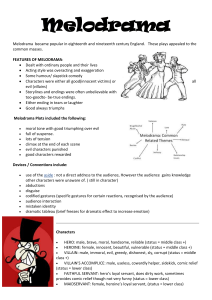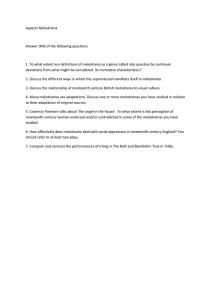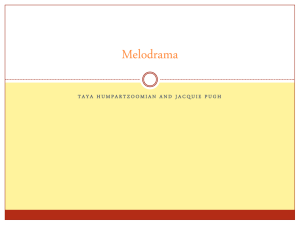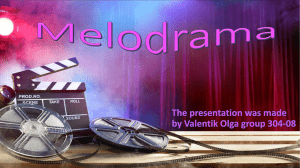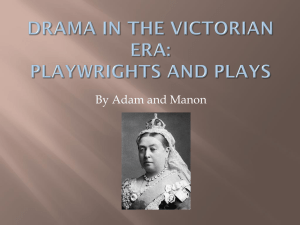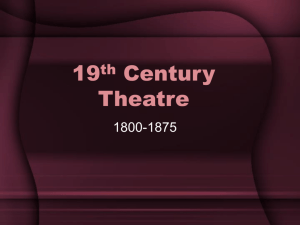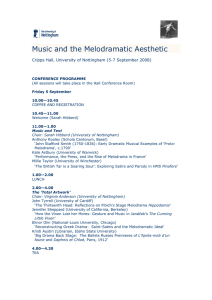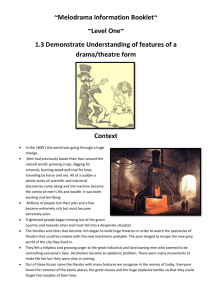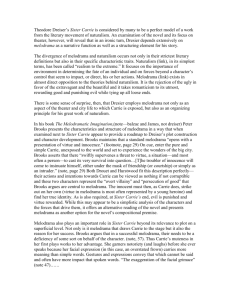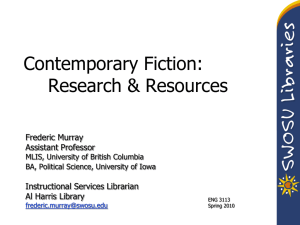melodrama - Laurel County Schools
advertisement
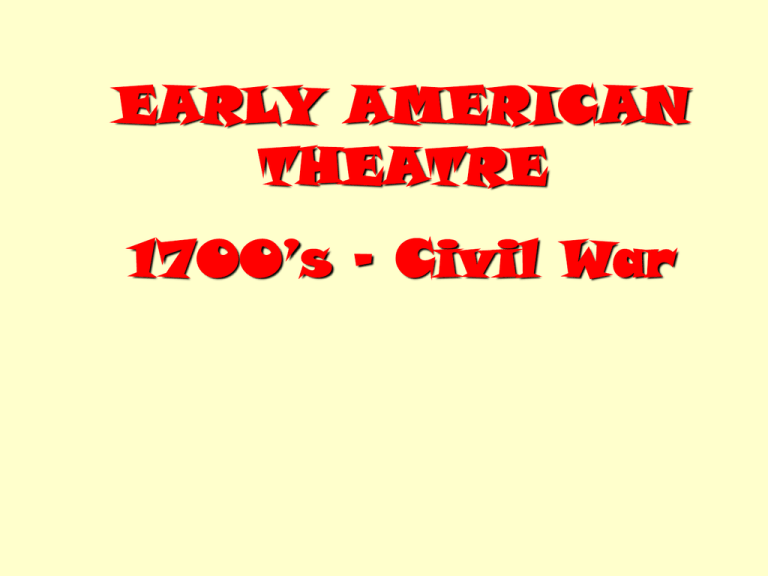
EARLY AMERICAN THEATRE 1700’s – Civil War Starting in the 1700’s, entertainers from England performed in U.S. large cities. During the Revolutionary War, many colonies banned theatrical performances to focus on the war. In the early 1800’s, well known stars toured the country. Popular theatrical forms of the 1800’s included: Specialty acts: jugglers, tumblers, etc. Minstrel shows (in the U.S.) Burlesque (parodies / satire of a serious form of literature) Pantomimes – elaborate tricks with scenery and costume. Short musical revues ("vaudevilles" in France) Comic operas – sentimental stories, original music. Revivals of Shakespeare – usually bowdlerized (censored for questionable material) Circus acts The most popular theatrical form of the 1800’s. What is Melodrama? The word "melodrama" comes from "melos", the Greek word for song, combined with "drama". Music is used to increase the emotional response or to suggest characters. A melodrama in a more neutral and technical sense of the term is a play, film, or other work in which plot and action are emphasized in comparison to the more character-driven emphasis within a drama. Melodramas can be distinguished from tragedy by the fact that they are open to having a happy ending. There is a tidy structure or formula to melodrama: a villain poses a threat, the hero escapes the threat (or rescues the heroine) and there is a happy ending. In melodrama there is constructed a world of heightened emotion, stock characters and a hero who rights the disturbance to the balance of good and evil in a moral universe. "... A bad gunslinger called Salty Sam was chasin' poor Sweet Sue "He trapped her in the old sawmill and said with an evil laugh, "If you don't give me the deed to your ranch "I'll saw you all in half! "And then he grabbed her (and then) "He tied her up (and then) "He turned on the bandsaw (and then, and then...!) …” Summary of the characteristics of Melodrama: •Comes from "music drama" – music was used to increase emotions or to signify characters (signature music). •A simplified moral universe; good and evil are embodied in stock characters. •Episodic form: the villain poses a threat, the hero or heroine escapes, etc.—with a happy ending. •Almost never five acts – usually 2-5 (five acts reserved for "serious" drama). •Many special effects: fires, explosions, drownings, earthquakes. So what does this have to do with today’s theatre? Melodrama is ubiquitous on television: it is evident, for example, in a long series of TV movies about diseases or domestic violence, or the large number of hour-long television programs about lawyers, police officers, or physicians. Issues melodrama is a type of melodrama in which current events or politics are given a dramatic treatment, hoping to use some recent crime or controversy as a vehicle to draw an emotional response from the viewer. The usual method is to involve lawyers, police officers, or physicians, who can then make speeches about the crime or controversy being dramatized. By this artifice, the dramatist seeks to engage the audience's recently refreshed sense of fear or moral disapproval, while simultaneously maintaining the posture that the drama so produced is timely and socially engaged. Action melodrama is another type of melodrama that is particularly prevalent in the action Hollywood film blockbuster. An athletic action hero is pitted against an evil villain, and through a bevy of fights, car chases, love scenes and splatter, the hero overcomes the villain and restores the balance of good in the universe. This subgenre often includes a heroine who fights then falls in love with the hero. Sylvester Stallone and Arnold Schwarzenegger are examples of the stars of these action melodramatic flicks. Informal use / Slang Casual use of the word as an adjective translates to exaggerated emotional affect or ways in expressing oneself. For example: "Don't be so melodramatic!" This has fallen into common everyday language. THE END!!
